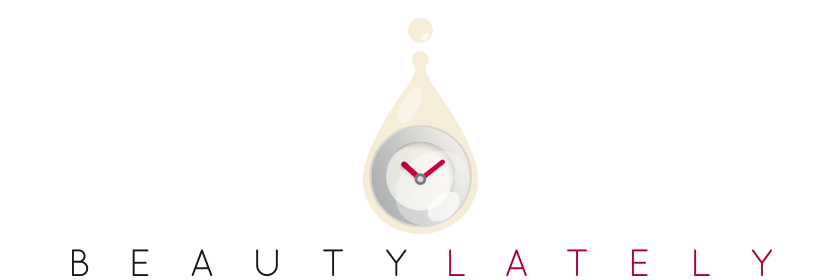Have you ever wondered why acne appears in certain areas of your face more frequently than others? I know my problem area – along my jawline. I get them around that area more than any other part of my face.
My family is from Taiwan, and we have a Chinese medicine shop in the neighborhood that I grew up in. Coincidentally, the last time I visited the shop, I had another one of my annoying breakout episodes. The herbalist working there commented that I must be close to “that time” of the month.
Breaking out before your period comes isn’t uncommon, but the herbalist mentioned that acne face maps indicate pimples related to hormonal changes tend to appear more frequently in the chin and jawline area.
She explained that Chinese medicine believes that the status of your health can manifest itself through symptoms that you can see. One of the most obvious symptoms is acne.
Acne Face Maps: A Practice Rooted in Chinese Medicine
Traditional Chinese medicine is all about balance – the yin and the yang, for example. Moderation and balance are the keys to maintaining good health.
When the body is out of balance, it means you’re being too extreme with something in your life – eating too much of a certain food, for example, or staying up late for too many nights in a row.
Acne is an inflammatory skin disorder, caused by what Chinese traditional medicine refers to as too much heat (火氣) and dampness (濕氣) in the body. These two symptoms can be caused by external factors (environment, weather) or internal factors (too much meat in your diet, too little exercise).
Chinese face mapping is a practice rooted in these beliefs: that areas of your face are linked to different organs and bodily functions and where your blemishes appear can help you zone in on how to improve your diet, lifestyle, and overall health.
Are acne face maps accurate?
Face mapping is a practice rooted more in tradition than science. Take this information with a grain of salt, as there hasn’t been any conclusive research that has proven it to be fact. I personally think it can be used as suggestions on adopting new habits that can lead to overall improvement in your complexion.
I’ve compiled information below that combines traditional face mapping methods with modern dermatology knowledge.
Related: If you struggle with acne, be sure to check out this post where I break down the best products from The Ordinary for acne concerns.
If you have ever wondered how you can balance your oily skin, this post is for you.

Acne around hairline and forehead
What Face Mapping Says: Acne around this area can indicate issues with your bladder or digestive system. It can also mean poor diet or that you’re not drinking enough water.
Another explanation could be that you’re not removing makeup, hair products, or shampoo properly. Double cleansing (removing makeup before washing your face) and consistent cleansing habits (never wearing makeup to bed) are important to avoid consistent breakouts in this area.
For example, I wear a hairband to keep my hair out of my face when I wash my face. If I’m not careful, the headband could cover up a part of my forehead and I’d miss washing the area effectively.
A zit between the eyebrows?
What Face Mapping Says: The area between eyebrows is related to liver. Excess alcohol or making a habit of eating late at night could be the culprit behind acne that pops up in this area.
You may also want to check to see if you might have any food allergies, particularly an intolerance to lactose and dairy products.
Breakouts on your cheeks
What Face Mapping Says: The cheeks correlate to lungs and respiratory system. People who smoke or who have allergies may notice more frequent breakouts in this area.
Another likely culprit behind pimples on your cheeks? Your cell phone.
Acne is caused by bacteria, and your phone is actually a hotbed of bacteria since you touch it throughout the day with your hands. The oils and bacteria from your hand then gets transferred to your cheeks, clogging pores and leading to zits.
Make a habit to clean your phone regularly and wipe it down after you use it so you don’t leave makeup residue on the screen. Even better? Use hands-free headphones.
Pimples on the nose
What Face Mapping Says: The nose is related to the heart, so if you have persistent acne appearing on your nose, it could be a sign of cholesterol or blood pressure issues.
My personal experience is that acne on the nose could be caused by glasses or sunglasses. Bottom line, you should clean anything that touches your face on a consistent basis. Oil, dirt, grime, makeup and bacteria can all block pores and lead to inflammation.
Breakouts around chin and jawline
What Face Mapping Says: If you ask my Chinese herbalist, my breakout around my chin and jawline was the result of the release of hormones due to menstrual cycle. Not surprising, since studies have found that almost half of women experience breakouts just before their period.
If you’re like me and experience pimples frequently around your chin and jawline, be careful also not to rest your face on your hands. I’m guilty of this especially when I was in school, listening to lectures or during meetings now at work. I also have a bad habit of touching my chin when I’m thinking or mindlessly scrolling on my phone, which I’m sure contributes to my breakouts.
Conclusion
Can the location of your acne really be an informal health status check? Maybe. I don’t think acne face maps should be taken as health advice, but it could be used as a helpful way to start some new healthy habits.
Acne is a result of numerous factors: age, genetics, hormones, hygiene, lifestyle, stress, environment, and of course, the products you use. If you don’t usually get pimples but suddenly see zits popping up more frequently than before, you could use face mapping techniques to pinpoint the possible reasons behind the breakout.
The above information is meant to be used as reference for consideration. In my honest opinion, persistent acne is best resolved by first seeing your dermatologist, analyzing some lifestyle factors, and adopting an appropriate skincare routine with recommended products that you maintain consistently.
Next Up: Picking the right skincare ingredient could really improve symptoms of acne. Niacinamide is an excellent ingredient to consider adding to your routine. This post goes into a lot of detail on what it is, how to use it, and my top picks for affordable options.
Save a Pin


